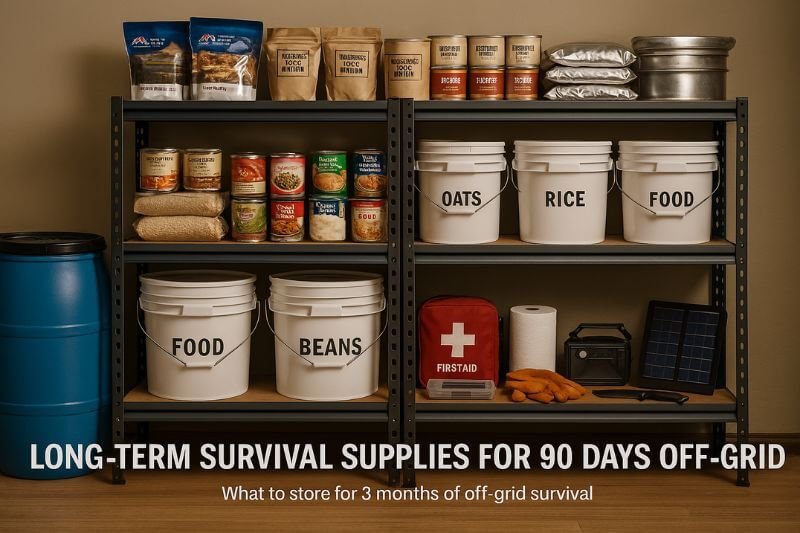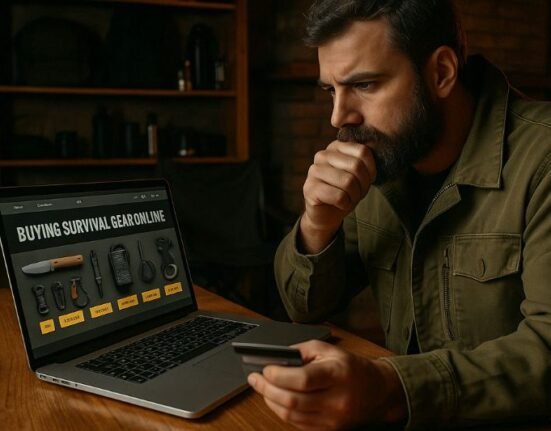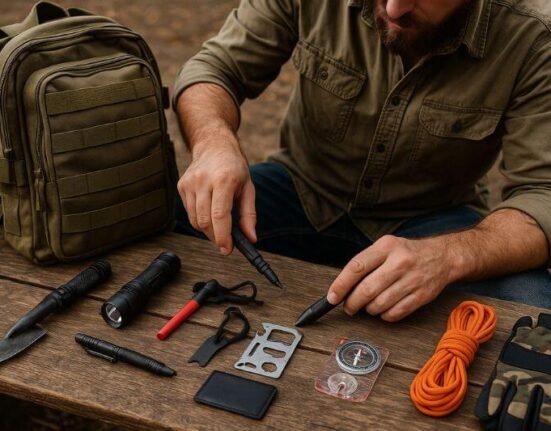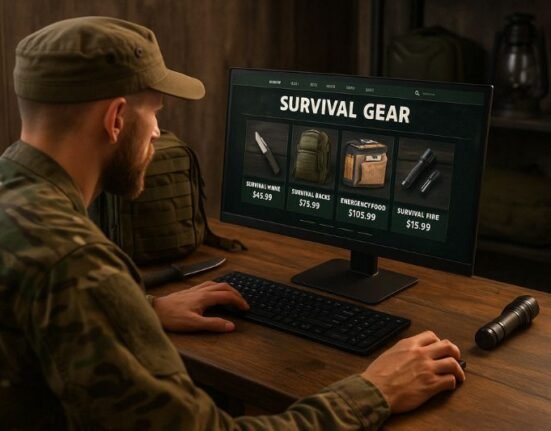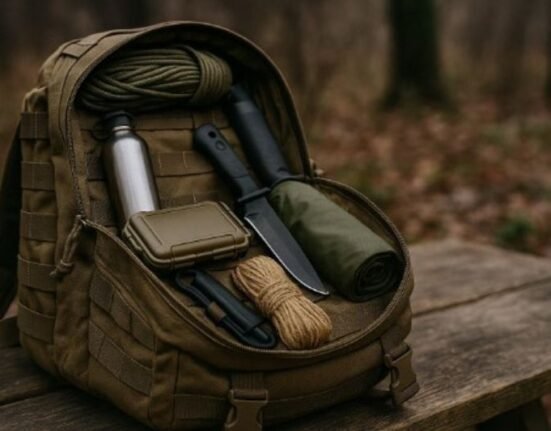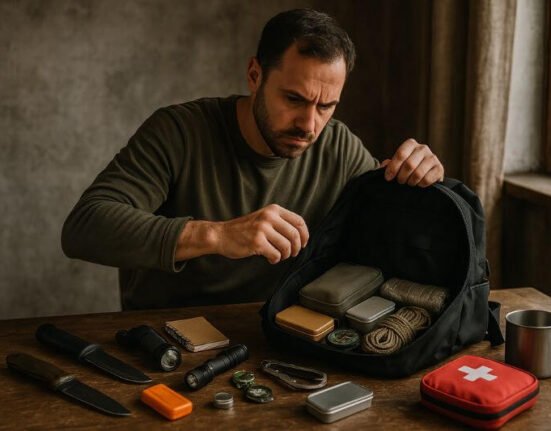Planning for 72 hours is smart. But planning for 90 days off-grid? That’s next-level survival — and increasingly necessary. With power outages, economic instability, and global unrest on the rise, having your long-term survival supplies in order could mean the difference between thriving and merely surviving.
In this detailed guide, we’ll break down everything you need to stay alive, healthy, and self-reliant for a full three months without modern infrastructure.
Why You Need to Prepare for 90 Days Off-Grid
Most government recommendations — like FEMA’s — stop at 72 hours. But real-world disasters don’t always resolve in three days.
Think of Hurricane Maria (2017): parts of Puerto Rico were without power or safe water for months.
Or global supply chain breakdowns during the COVID-19 pandemic.
“Every family should prepare for at least 90 days of self-sufficiency.” — Prepping Beyond the Basics, CrisisReady Institute 2024
A 3-month plan covers not just emergencies — but economic collapse, war, cyberattacks, energy shortages, and long-term social disruption.
1. Water Storage and Purification for 90 Days
Humans need 1 gallon of water per day — for drinking, cooking, and basic hygiene. That’s 90 gallons per person. Multiply that by your household, and the numbers become serious.
💧 Water Supply Strategy:
- Primary storage: Food-grade barrels (55 gal), stackable containers (5-7 gal each)
- Secondary source: Rainwater harvesting system + filters
- Purification methods:
- Gravity-fed filters (e.g. Berkey)
- Bleach (unscented, for emergency disinfection)
- Water purification tablets (backup)
CDC guidelines recommend treating all collected water unless it’s sealed.
✅ Best practice: Rotate stored water every 6 months. Label dates.
2. Long-Term Food Storage: 2000 Calories x 90 Days
That’s 180,000 calories per person. Nutrition isn’t just survival — it’s strength, clarity, and morale.
🍲 Core Food Types:
| Food Type | Examples | Shelf Life |
|---|---|---|
| Grains | Rice, oats, pasta | 20–30 years |
| Legumes | Lentils, black beans, chickpeas | 25+ years |
| Canned goods | Tuna, chicken, tomatoes, soup | 2–5 years |
| Freeze-dried meals | Mountain House, Augason Farms | 20–30 years |
| Baking supplies | Salt, sugar, yeast, baking powder | Indefinite (dry) |
| Comfort foods | Coffee, chocolate, peanut butter | 1–2 years |
🎯 Add spices to avoid food fatigue. A morale booster is worth its weight.
🍴 Don’t Forget:
- Manual can opener
- Cooking oil or ghee
- Vitamin supplements (especially C, D, and magnesium)
📦 Store food in Mylar bags + oxygen absorbers + buckets. Use the FIFO method (First In, First Out) to rotate short-term items.
3. Energy and Lighting Without the Grid
Forget candles — they’re short-lived and a fire hazard. A 90-day plan needs sustainable, safe light and energy.
🔋 Power Options:
- Solar generator + panel kits (Goal Zero, Bluetti, Jackery)
- Battery bank with solar recharging
- Crank lanterns and LED headlamps
- AA/AAA rechargeable batteries + solar charger
| Energy Use | Off-Grid Option |
|---|---|
| Lighting | Solar lanterns, headlamps |
| Cooking | Butane stove, rocket stove, solar oven |
| Communication | Solar/crank radio, USB power bank |
| Refrigeration | Solar-powered fridge (if critical meds) |
💡 Pro tip: Install motion-sensor solar lights outside for security.
4. Off-Grid Cooking Solutions
In a long-term grid-down situation, you need fuel-efficient and safe cooking methods — ideally ones that work indoors or in harsh weather.
🍳 Recommended Gear:
- Rocket stove (uses twigs, burns hot)
- Butane/propane camp stove (easy control)
- Solar oven (zero fuel use, sunny weather)
- Dutch oven (works on coals or open fire)
- Cast iron skillet (indestructible and non-toxic)
🔥 Store multiple fuel sources: propane tanks, butane canisters, or a reliable woodpile.
✅ Caution: Never use fuel-based stoves indoors without proper ventilation.
5. Medical & Sanitation Supplies (90-Day Minimum)
Healthcare won’t be available on demand. You’ll need the ability to handle common illnesses and injuries — without clinics or pharmacies.
🩺 Medical Supply Checklist:
- Comprehensive first aid kit + trauma kit
- Antibiotics (fish antibiotics or emergency RX)
- OTC meds: pain relievers, allergy, cold/flu, stomach
- Medical reference book (Where There Is No Doctor)
- Bandages, gauze, tape, antiseptic, gloves, scissors
🧼 Hygiene Must-Haves:
- Bar soap (multi-use)
- Toothpaste & brushes
- Trash bags (for waste management)
- Chlorine bleach (for disinfection)
- Sanitary napkins/tampons or reusable cloths
- Toilet paper (or alternatives like compressed towels)
🛑 Pro tip: Build a bucket toilet system (5-gallon bucket + seat lid + sawdust or kitty litter) if plumbing fails.
6. Durable Clothing and Protective Wear
Clothing isn’t fashion during a crisis — it’s protection, hygiene, and mobility. Over 90 days, you’ll face temperature shifts, physical labor, and likely limited laundry.
👕 Minimum Wardrobe:
- 3 moisture-wicking base layers (shirts + underwear)
- 2 pairs of rugged cargo pants
- Wool socks (6–10 pairs)
- Thermal layers (for cold climates)
- Weatherproof jacket or poncho
- Hat (wide-brim for sun, wool for cold)
- Gloves (tactical or work-grade)
🧺 Pro tip: Include a portable laundry kit: bucket + plunger + biodegradable detergent.
7. Tools, Gear, and Maintenance Essentials
Your tools are what allow you to repair, build, cook, secure, or adapt — without outside help.
🛠️ Tool Kit Essentials:
- Fixed-blade survival knife
- Multitool (pliers, screwdriver, file)
- Camp axe or hatchet
- Folding saw
- Duct tape
- Paracord (100 ft minimum)
- Sharpening stone or file
- Nails, zip ties, sewing kit, bungee cords
✅ Store tools in clearly labeled bins or a tool roll for easy access.
8. Security, Defense, and Perimeter Protection
In long-term grid-down events, crime risk rises. You need non-lethal and defensive tools to protect your supplies, shelter, and people.
🔐 Suggested Gear:
- Solar-powered perimeter lights
- Reinforced door locks or barricades
- Pepper spray or bear spray
- Loud whistle or motion alarms
- Firearm (if legal, trained, and responsibly stored)
- Dog (early warning + protection)
“Security isn’t just weapons. It’s planning, barriers, and vigilance.” — Strategic Prepper Report, 2023
9. Storage and Organization Systems
Imagine trying to find iodine tablets, screws, or batteries in the dark, under stress. Your supplies must be organized like a mini logistics hub.
🧩 System Ideas:
- Color-coded bins (food, tools, medical, power, hygiene)
- Clear labeling + inventory logbook
- Store small items in see-through zipper bags
- Use shelving units and waterproof totes
- Rotate food/water by expiration date
📋 Build a supply tracking spreadsheet — digital and printed.
10. Printable Master Checklist (90 Days, Single Adult)
| Category | Quantity / Notes |
|---|---|
| Water | 90+ gallons + filter systems |
| Food | 180,000 calories (mix freeze-dried, bulk) |
| Hygiene | 90 days soap, TP, menstrual products |
| Power | Solar + backup batteries, LED lighting |
| Shelter | Warm bedding, tarps, repair tools |
| Tools | Axe, knife, saw, duct tape, fasteners |
| Cooking | Rocket stove, fuel, utensils |
| First Aid | Full trauma kit + meds + reference book |
| Defense | Deterrents, alarms, spray, firearms (opt) |
| Clothing | Weather-appropriate, durable, spare sets |
| Documentation | Printed plans, ID copies, maps |
✅ Print 3 copies: one in your binder, one in your main storage, one in your go-bag.
Internal Resources to Explore
- 🔗 Top 25 Survival Supplies Every Beginner Prepper Needs
- 🔗 Bug Out Bag Essentials: What to Actually Pack
- 🔗 Survival Food Supplies to Stock Before the Crisis
- 🔗 How to Build a 3-Tier Survival Supply System
Conclusion: Preparedness Isn’t Paranoia — It’s a Plan
Long-term survival isn’t about hoarding — it’s about self-reliance, structure, and foresight. With the right long-term survival supplies, you’re not just reacting to crisis…
You’re staying strong, independent, and one step ahead.
👉 Ready to build your 90-day kit?
✅ Download our Printable 90-Day Survival Checklist
✅ Bookmark this guide for your supply inventory rotation
✅ Share it with your local network or preparedness group
Because survival is a mindset. Not a reaction.
FAQ: Long-Term Survival Supplies
Can I survive 90 days with just freeze-dried food?
Yes, but it’s best to combine it with canned, bulk dry goods, and comfort items for nutrition + morale.
What if I don’t have space for water storage?
Use stackable containers, rainwater catchment, and a strong filtration system as a workaround.
Should I store everything in one location?
No. Diversify storage: main stockpile + backup cache + mobile bug-out kit.









